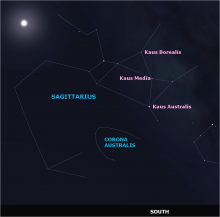Listen to today's episode of StarDate on the web the same day it airs in high-quality streaming audio without any extra ads or announcements. Choose a $8 one-month pass, or listen every day for a year for just $30.
You are here
Dog Days
Depending on your viewpoint, the Dog Days of summer are either in full swing or they’re just wrapping up. That’s because there’s no formal definition for the dates of the Dog Days. All we can say for sure is that this period got its name from the brightest star in the night sky.
Sirius is the leading light of Canis Major, the big dog. So it’s also known as the Dog Star.
The period of summer’s greatest heat came to be called the Dog Days in ancient Greece. The heat set in around the time Sirius made its first appearance in the dawn sky, in July. Since the star was so conspicuous, the Greeks associated the heat of summer with the Dog Star — so the period became known as the Dog Days.
Today, though, Sirius doesn’t make that first dawn appearance at mid-northern latitudes until August.
The change is thanks to an effect known as precession. Earth “wobbles” on its axis like a gyroscope that’s beginning to spin down. As it wobbles, the stars all shift position with respect to the seasons. So Sirius pops into view later in the summer than it did thousands of years ago.
Some sources define the Dog Days as the period from about July 3rd to August 11th. By that definition, the Dog Days end as Sirius first climbs into view. But others have pushed the Dog Days later to keep in line with Sirius’s dawn showing. So by those accounts, the Dog Days are still in full force.
Look for Sirius quite low in the east-southeast in early twilight — the star that brings the Dog Days.
Script by Damond Benningfield




